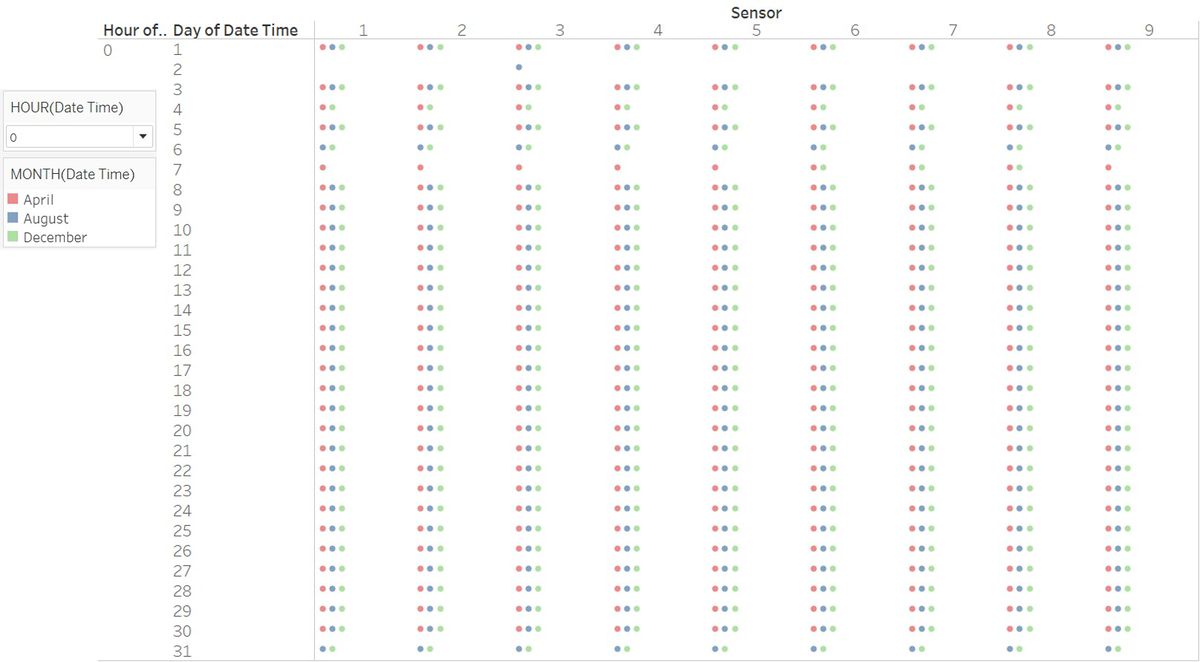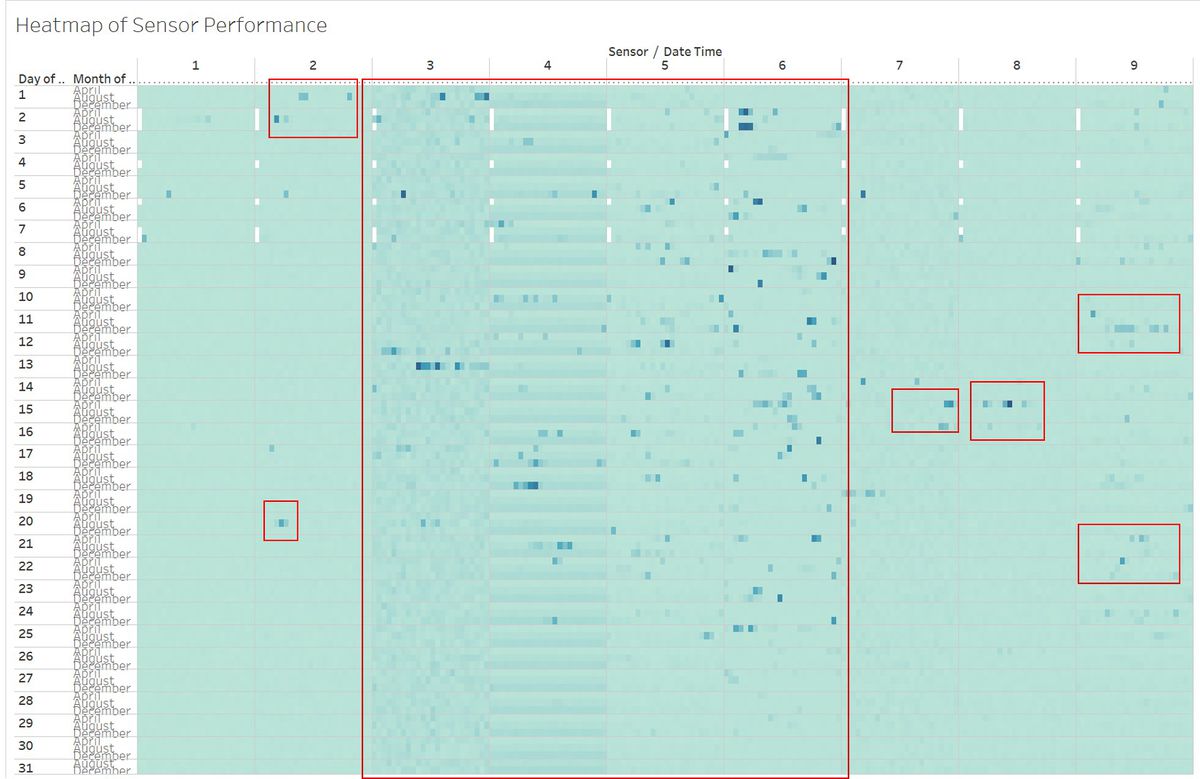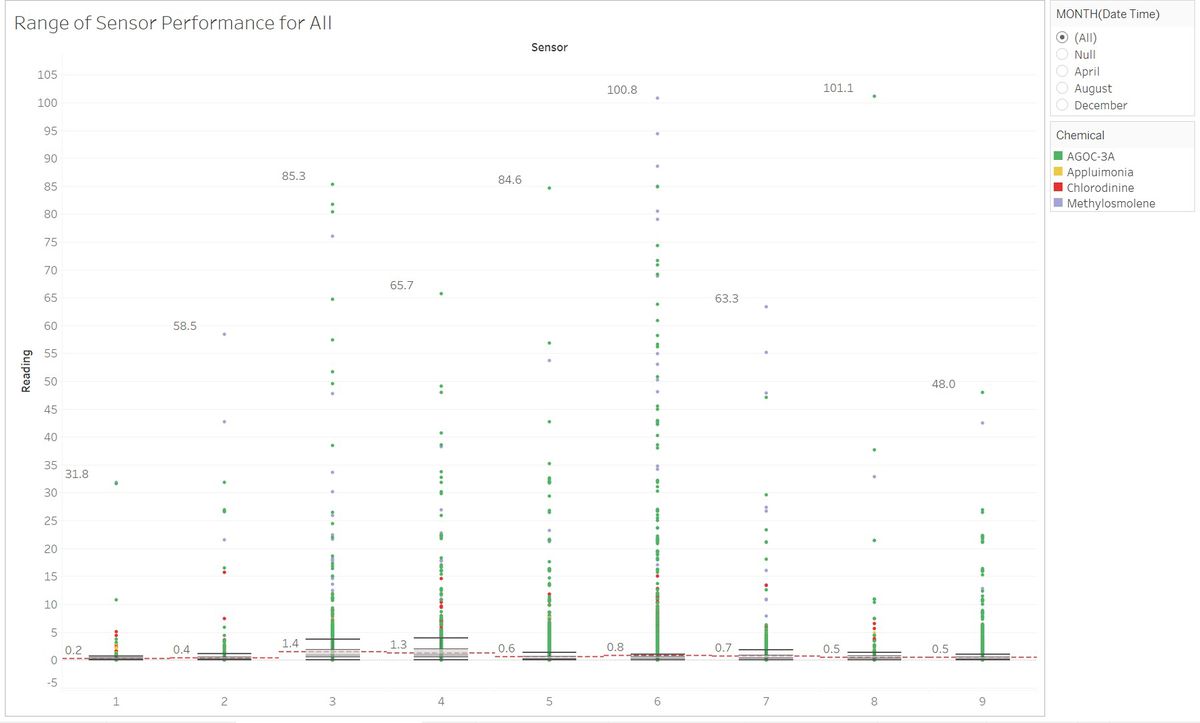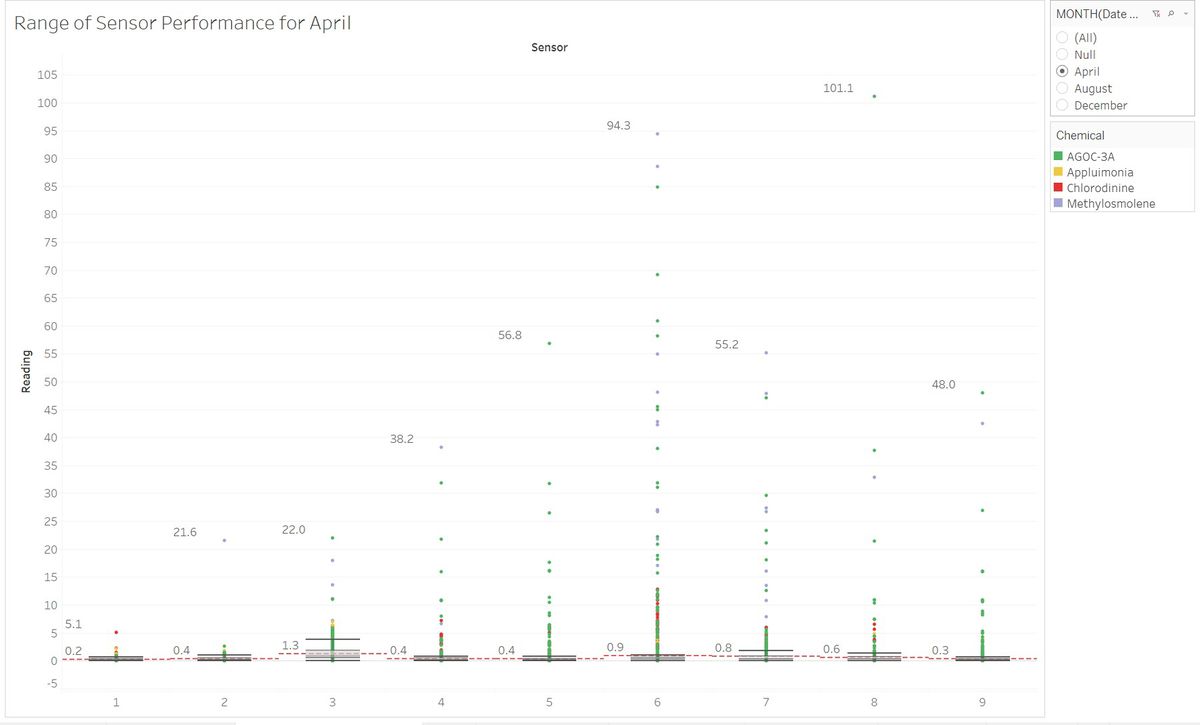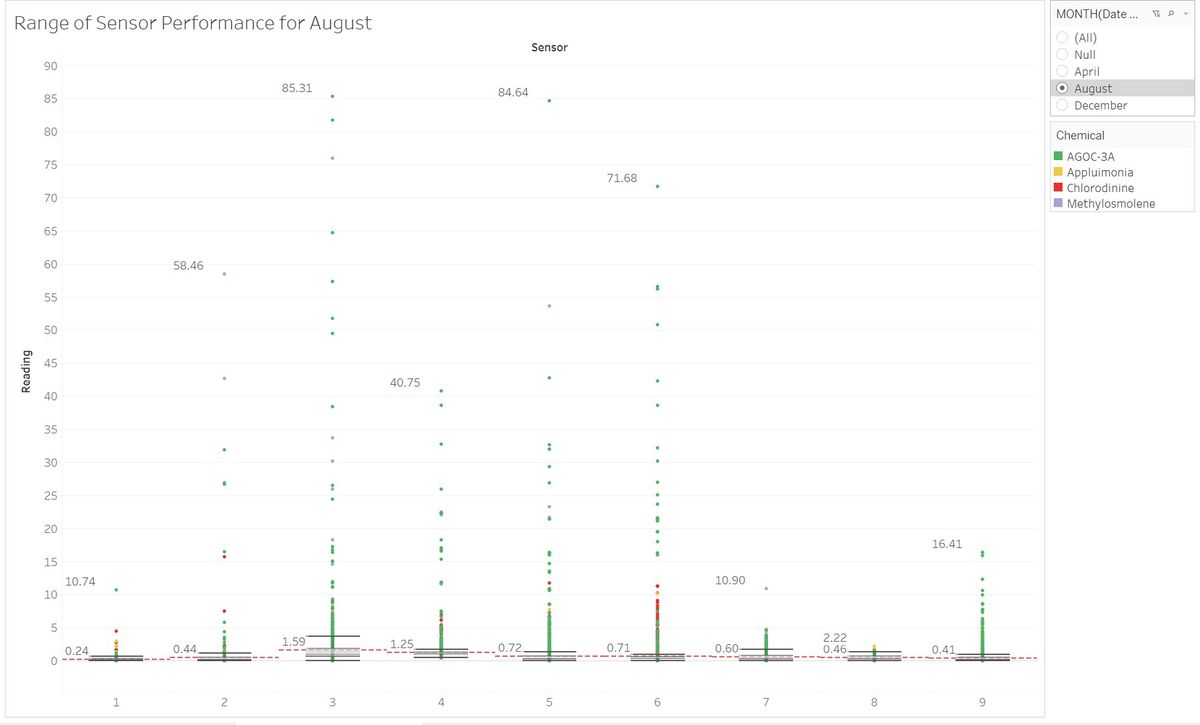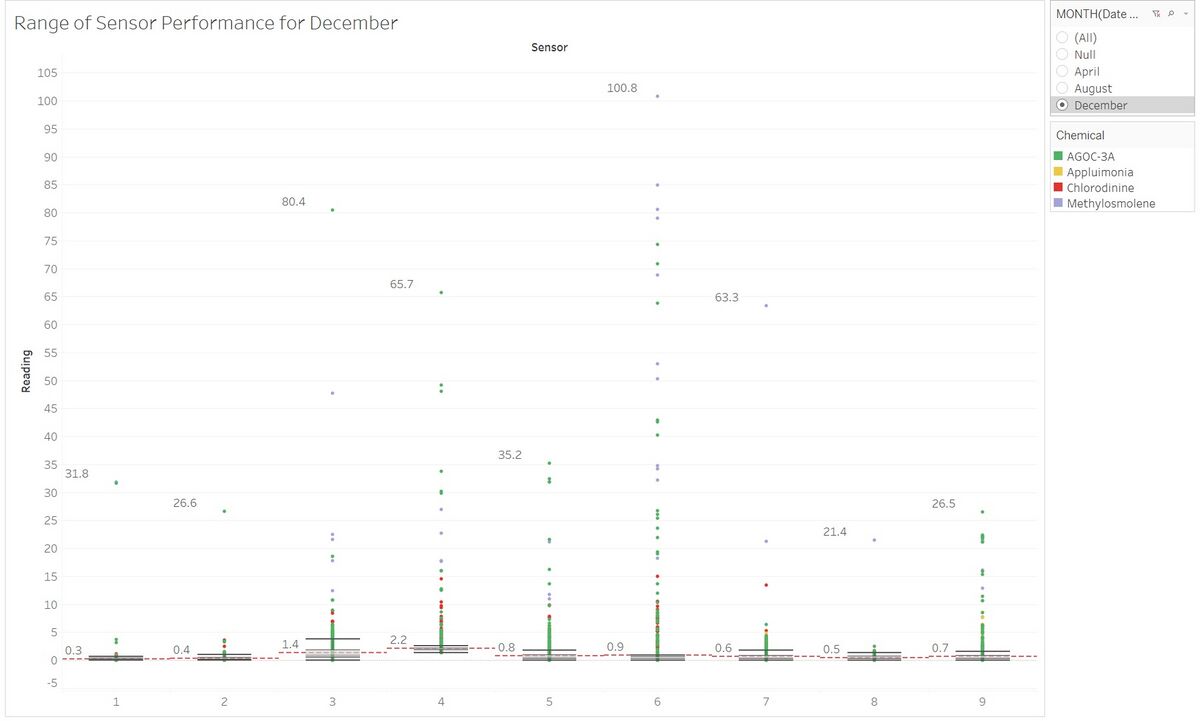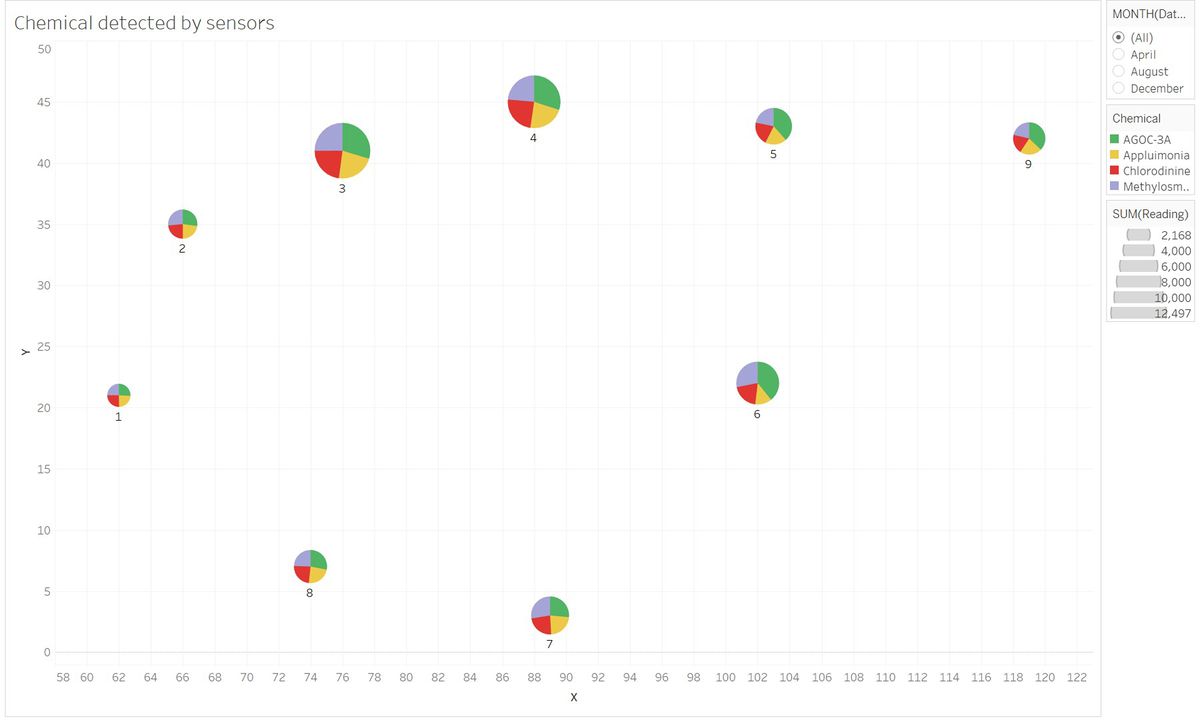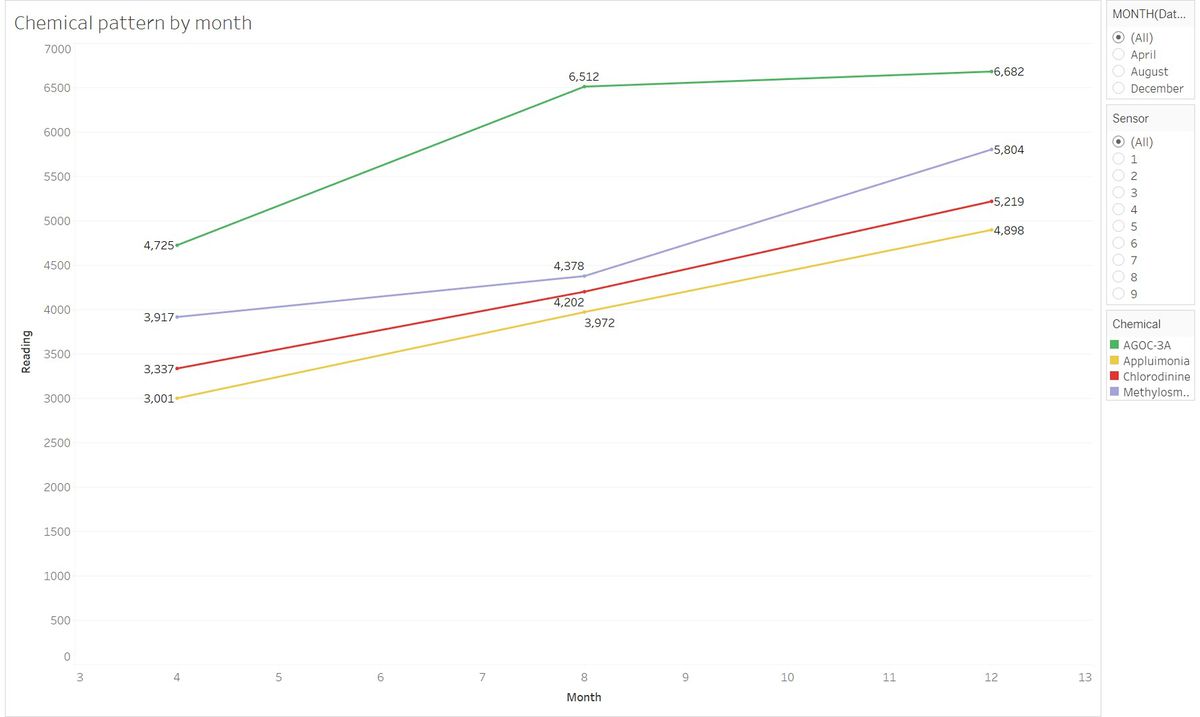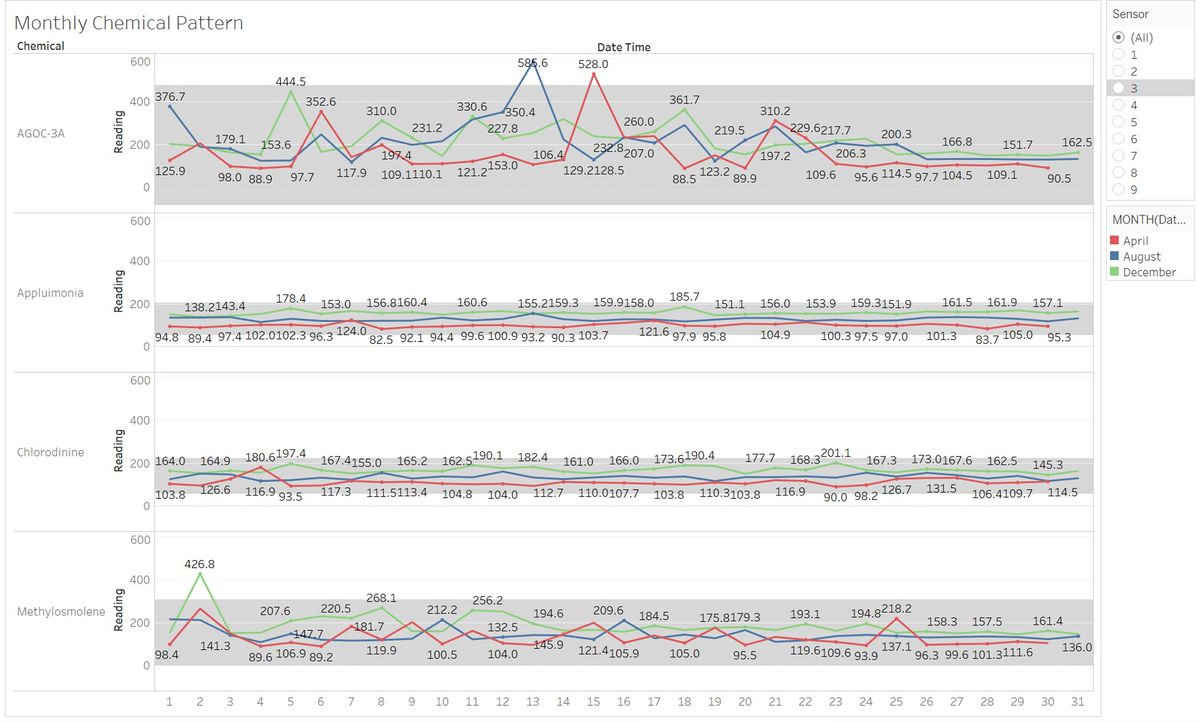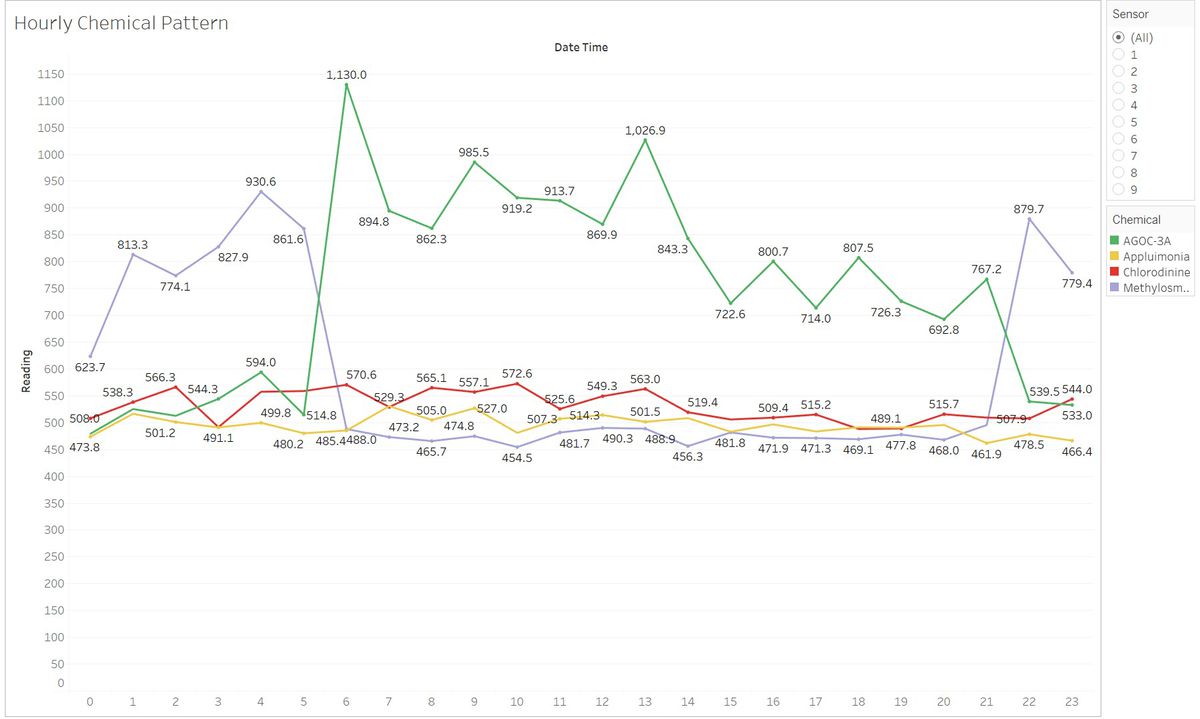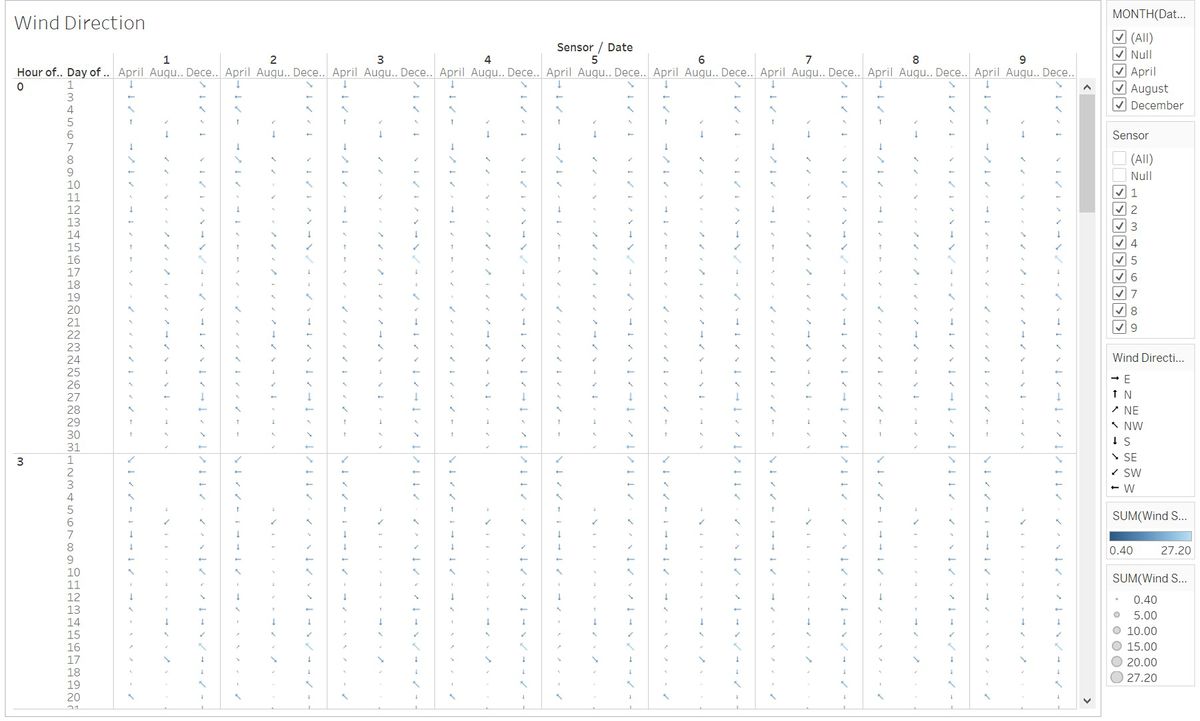IS428 2017-18 T1 Assign M Has Nilofar
Overview
Mistford is a mid-size city is located to the southwest of a large nature preserve. The city has a small industrial area with four light-manufacturing endeavors. Mitch Vogel is a post-doc student studying ornithology at Mistford College and has been discovering signs that the number of nesting pairs of the Rose-Crested Blue Pipit, a popular local bird due to its attractive plumage and pleasant songs, is decreasing! The decrease is sufficiently significant that the Pangera Ornithology Conservation Society is sponsoring Mitch to undertake additional studies to identify the possible reasons. Mitch is gaining access to several datasets that may help him in his work, and he has asked you (and your colleagues) as experts in visual analytics to help him analyze these datasets.
Mitch Vogel was immediately suspicious of the noxious gases just pouring out of the smokestacks from the four manufacturing factories south of the nature preserve. He was almost certain that all of these companies are contributing to the downfall of the poor Rose-crested Blue Pipit bird. But when he talked to company representatives and workers, they all seem to be nice people and actually pretty respectful of the environment.
In fact, Mitch was surprised to learn that the factories had recently taken steps to make their processes more environmentally friendly, even though it raised their cost of production. Mitch discovered that the state government has been monitoring the gaseous effluents from the factories through a set of sensors, distributed around the factories, and set between the smokestacks, the city of Mistford and the nature preserve. The state has given Mitch access to their air sampler data, meteorological data, and locations map. Mitch is very good in Excel, but he knows that there are better tools for data discovery, and he knows that you are very clever at visual analytics and would be able to help perform an analysis.
Background
Manufacturing Companies near Mistford
Roadrunner Fitness Electronics
Roadrunner produces personal fitness trackers, heart rate monitors, headlamps, GPS watches, and other sport-related consumer electronics. Roadrunner began as one of the region’s first fitness stores in 1962, with an eye toward outfitting the entire nation with appropriate outdoor gear. After an earthquake nearly destroyed their main warehouse in 1968, Roadrunner turned a bad situation into a glowing success with the first “slightly damaged goods” sale. After which they began to focus on manufacturing; though their “Earthshaking Bargains” business still sells dented, overstocked and refurbished items over the internet and from a small retail shop attached to their front office.
Kasios Office Furniture
Kasios Office Furniture manufactures metal and composite-wood office furniture including desks, tables, and chairs. Kasios wants to do with desk chairs what Starbucks did for coffee – making office furniture what people must have, instead of what they just need. “Office equipment doesn’t need to be ugly!” says founder Ken Kasios. “We have redesigned all office products to be cool, fun, and hip—even your basic stapler.” Kasios business model is focused on in-store merchandising highlighting the beauty and functionality of their “user-centered design”. They recently celebrated the one-year anniversary of a distribution and merchandising agreement with the national office supply chain store PaperKlips.
Radiance ColourTek
Radiance produces solvent based optically variable metallic flake paints. “Metallic paints with an untarnished reputation!” quips ColourTek’s Senior Vice President Arthur Donner. “Radiance ColourTek metallic paints are worth their weight in gold.” Offering a new generation of paints in the 1970s, Radiance out marketed all competitors for three decades until manufacturing process issues began to tarnish their reputation. “We were challenged,” said Donner. “Polishing up our pearlescent pigments caused us to lose luster, but now we have the lowest VOCs (volatile organic compounds) in the industry!”
Indigo Sol Boards
Indigo Sol produces skateboards and snowboards. Founder Billy Keys started off manufacturing wooden wine barrels for northwestern US wineries, but then navigated a course from decorative fiberglass wine barrels to making his first pair of fiberglass skis in 1971. Excellent product and sales decisions rocketed Keys Skis production to unexpected levels, until they were bought out by a large Denver, Colorado-based private investment group. Keys returned to making specialized snowboards in the 1980s, with a small company in Mistford called Indigo Sol. The company has seen modest growth in recent years.
Chemicals
Appluimonia
An airborne odor is caused by a substance in the air that you can smell. Odors, or smells, can be either pleasant or unpleasant. In general, most substances that cause odors in the outdoor air are not at levels that can cause serious injury, long-term health effects, or death to humans or animals. However, odors may affect your quality of life and sense of well-being. Several odor-producing substances, including Appluimonia, are monitored under this program.
Chlorodinine
Corrosives are materials that can attack and chemically destroy exposed body tissues. Corrosives can also damage or even destroy metal. They begin to cause damage as soon as they touch the skin, eyes, respiratory tract, digestive tract, or the metal. They might be hazardous in other ways too, depending on the particular corrosive material. An example is the chemical Chlorodinine. It has been used as a disinfectant and sterilizing agent as well as other uses. It is harmful if inhaled or swallowed.
Methylosmolene
This is a trade name for a family of volatile organic solvents. After the publication of several studies documenting the toxic side effects of Methylosmolene in vertebrates, the chemical was strictly regulated in the manufacturing sector. Liquid forms of Methylosmolene are required by law to be chemically neutralized before disposal.
AGOC-3A
New environmental regulations, and consumer demand, have led to the development of low-VOC and zero-VOC solvents. Most manufacturers now use one or more low-VOC substances and Mistford’s plants have wholeheartedly signed on. These new solvents, including AGOC-3A, are less harmful to human and environmental health.
Task
General Task
The four factories in the industrial area are subjected to higher-than-usual environmental assessment, due to their proximity to both the city and the preserve. Gaseous effluent data from several sampling stations has been collected over several months, along with meteorological data (wind speed and direction), that could help Mitch understand what impact these factories may be having on the Rose-Crested Blue Pipit. These factories are supposed to be quite compliant with recent years’ environmental regulations, but Mitch has his doubts that the actual data has been closely reviewed. Could visual analytics help him understand the real situation?
The primary job for Mitch is to determine which (if any) of the factories may be contributing to the problems of the Rose-crested Blue Pipit. Often, air sampling analysis deals with a single chemical being emitted by a single factory. In this case, though, there are four factories, potentially each emitting four chemicals, being monitored by nine different sensors. Further, some chemicals being emitted are more hazardous than others. Your task, as supported by visual analytics that you apply, is to detangle the data to help Mitch determine where problems may be. Use visual analytics to analyze the available data and develop responses to the questions below.
Specific Task & Solution
Problem 1: About Sensors
Characterize the sensors’ performance and operation. Are they all working properly at all times? Can you detect any unexpected behaviors of the sensors through analyzing the readings they capture? Limit your response to no more than 9 images and 1000 words.
Solution 1
Overall, the sensors work properly almost all the time except for a few times at Hour 0. They capture a reading on every other hours through April, August and September, except at 0 hour where there are some missing readings.
As seen in figure 1.1 above, the missing data can be categorised as follows:
- Hour 0 Day 2: None of the sensors captured any readings, except for one (Sensor 3), which only captured one month (August)
- Hour 0 Day 4: None of the sensors captured any readings for August, which means that there are no data for 4th August 2016 at 00 00H
- Hour 0 Day 6: None of the sensors captured any readings for April, which means that there are no data for 6th April 2016 at 00 00H
- Hour 0 Day 7: None of the sensors captured any readings for August, which means that there are no data for 7th August 2016 at 00 00H; Sensors 1, 2, 3, 4, 5 and 9 did not capture data for 7th December.
Apart from the missing values highlighted above (and represented as white spaces in the heatmap), the sensors have been working without fail. However, as seen in Figure 1.2, Sensors 3, 4, 5 and 6 constantly have higher concentration of reading throughout April, August and December. This is evident from the relatively darker shades of blue in these sensors’ regions compared to the other sensors. Nevertheless, the other sensors, too, had higher readings as marked by the red boxes in Figure 1.2.
Possible reasons for sensors to pick up high concentration of readings:
- Sensors could be near the companies which produce the chemicals
- Wind blowing towards the sensor may be carrying chemicals from the companies on the other side
AGOC-3A and Methylosmolene are captured to be the highest readings across the sensors.
| Sensor | Highest Reading | Chemical |
|---|---|---|
| 1 | 31.8 | AGOC – 3A |
| 2 | 58.5 | Methylosmolene |
| 3 | 85.3 | AGOC – 3A |
| 4 | 65.7 | AGOC – 3A |
| 5 | 84.6 | AGOC – 3A |
| 6 | 100.8 | Methylosmolene |
| 7 | 63.3 | Methylosmolene |
| 8 | 101.1 | AGOC – 3A |
| 9 | 48.0 | AGOC – 3A |
From the above three figures, we can derive the number of times each chemical had the highest reading for each sensor, which is shown in the following table:
| Chemical | April | August | December | Total |
|---|---|---|---|---|
| AGOC-3A | 4 | 6 | 6 | 16 |
| Appluimonia | 0 | 1 | 0 | 1 |
| Chlorodinine | 1 | 0 | 0 | 1 |
| Methylosmolene | 4 | 2 | 3 | 9 |
Although, the sensors detect all the chemicals, AGOC-3A and Methylosmolene are higher in proportion in air as detected by most of the sensors. These chemicals could be playing a more significant role in the decreased of the bird species
Problem 2: About Chemicals
Now turn your attention to the chemicals themselves. Which chemicals are being detected by the sensor group? What patterns of chemical releases do you see, as being reported in the data? Limit your response to no more than 6 images and 500 words.
Solution 2
As seen in Figure 2.1, all the sensors detect all the four chemicals. However, the percentage of AGOC-3A is at least 30% of the composition for almost all the sensors.
As seen in Figure 2.2, the readings for all the chemicals had been increasing since April. This is an alarming sign that the chemicals are released into the environment before it could be removed from the atmosphere.
Figure 2.3 has a Upper and Lower limit of 3-sigma. Hence, any reading that falls across this region/band would mean that it is an anomaly and that the cause of the fluctuation of the reading is not a normal cause of fluctuations throughout the month. In that case, AGOC-3A and Methylosmolene have the highest number of anomalies, which rings a bell of caution.
In Figure 2.4, we see an interesting pattern where when the readings for AGOC-3A decreases, readings for Methylosmolene increases, and vice versa. This shows that, there might be a relationship with these chemicals or the companies that produce these chemicals
Problem 3: Factory Responsible for Chemical Release
Which factories are responsible for which chemical releases? Carefully describe how you determined this using all the data you have available. For the factories you identified, describe any observed patterns of operation revealed in the data. Limit your response to no more than 8 images and 1000 words.
Solution 3
Interactive Visualisation
https://public.tableau.com/profile/has.nilofar#!/vizhome/Assignment_MHasNilofar/Story1?publish=yes
